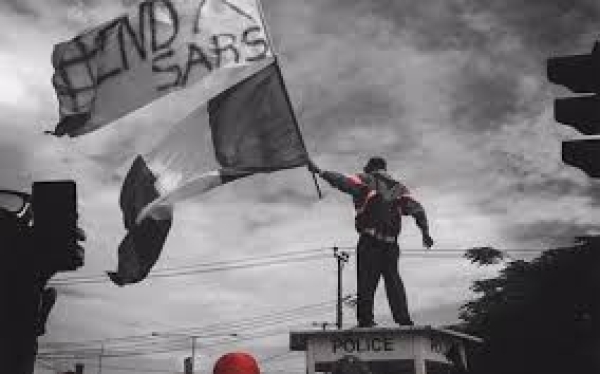•DSS ex-Director Ejiofor speaks on the differences between the 2012 (peaceful), 2020 (violent) and looming 2024 protest
Looming protest, if it goes ahead between Thursday,August 1 and Saturday, August 10, will be the third major nationwide protest in more than one decade. There were 2012 and 2020 protests, and now 2024 uncertain protest. The 2012 protest, tagged Occupy Nigeria, began on Monday, January 2 of that year in response to then-fuel subsidy removal by the Federal Government of President Goodluck Jonathan on Sunday, January 1. Protest took place across the country, including in the cities of Kano, Surulere, Ojota (part of metropolitan Lagos ), Abuja, Minna, and at the Nigerian High Commission in London.
The protest was characterised by civil disobedience, civil resistance, strike actions, demonstrations and online activism. The use of social media services such as Twitter and Facebook was a prominent feature of the protest. President Bola Tinubu was said to have taken part in the protest at that time. The 2020 protest was a decentralised social movement against police brutality in Nigeria that mainly occurred in 2020.
The movement’s slogan called for the disbandment of the Special Anti-Robbery Squad (SARS), a notorious unit of the Nigeria Police known for its long record of abuse against citizens. The protest originated from a Twitter campaign in 2017, using the hashtag #EndSARS to demand the unit’s disbandment by the Federal Government. The movement experienced resurgence in October 2020 following further revelations of the unit’s abuses, leading to mass demonstrations across major cities in Nigeria, and widespread outrage on social media platforms. The hashtag #EndSARS accumulated over 28 million tweets on Twitter alone. Notably, the movement was predominantly led by young Nigerians and expanded to include demands for good governance and accountability amid hardship in the country.
The protest took a violent turn following alleged attacks on protesters by security forces and suspected thugs launching attacks on people and properties. At Lekki toll gate, Lagos, one of the sites where security forces allegedly attacked peaceful protesters, it was reported that armed men of the Nigerian Army arrived and opened fire, thereby resulting in a disputed number of deaths. A clip of the shooting videoed by a Nigerian youth, DJ Switch, trended on the Internet purportedly showing how live round of bullets were being shot at innocent protesters who crouched on the ground, holding hands together and singing the national anthem. There were also reports that at least 50 other people were injured.
However, Lagos State government reported that the shooting resulted in about 25 injured and only two dead. There is heightened fear that the looming protest may go the way of the 2020 protest that turned violent. Mike Ejiofor, a retired Director of the Department of State Service (DSS), speaks on the 2012 and 2020 protests as well as the looming nationwide protest. Ejiofor spoke on a television programme. Excerpts:
Different
The protest of 2012 was different from the 2020 protest. And the organizers of each of the protests were different. President Tinubu even admitted that he has been protesting. The 2020 protest was majorly organized by youths. And if you recall, at the beginning of that protest, they were peaceful until it was hijacked by other interest groups. And this may not have come from government. (But) some people see this government as the best government whatsoever because of their personal interest and not because of national interest. So anything that can jolt the smooth running of the government, they will also try to protect the interest of government.
That is why we are afraid that this protest might be hijacked. Some people might say this APC government is not doing well, but others will say it is the best government we ever had. So we have conflicting interests. That is why it is necessary for now, because of enormous security
challenges, we should not compound the situation by engaging in protest. On the other side, the DSS has said they have identified the sponsors and sources of funding. I am not in service, I am out of service. They have their intelligence. They have all it takes because they brief the president. Possibly that is why the president has been consulting.
Circumstances
The circumstances of the two protests are the same. But again if you look at 2012, the protest didn’t turn violent because of the body language of the sitting president then. He allowed everything to go, and the situation was not as bad as what we have now. Now it can be exploited because people are hungrier now, people are desperate and may want to use anything to ventilate their anger. And that is why the government is saying that people can protest but it should not go violent.
If you look at the 2020 protest, it was mainly organized by the youths and that is why it turned violent and the demands why quite different from the 2012’s and that is also why it turned violent. The 2020 protest was particularly against police brutality.
You recall how it started from Delta State. And as people were talking about #EndSARS, there was maximum force used to suppress the riot after it degenerated from protest.
But in 2012, people gathered, they were there carrying out their protest peacefully, nobody worried them. If it is going to be like that now, I don’t think government will stop anyone from protesting but the fear is very high that this protest will be hijacked. The fears are there.
[Vanguard]

